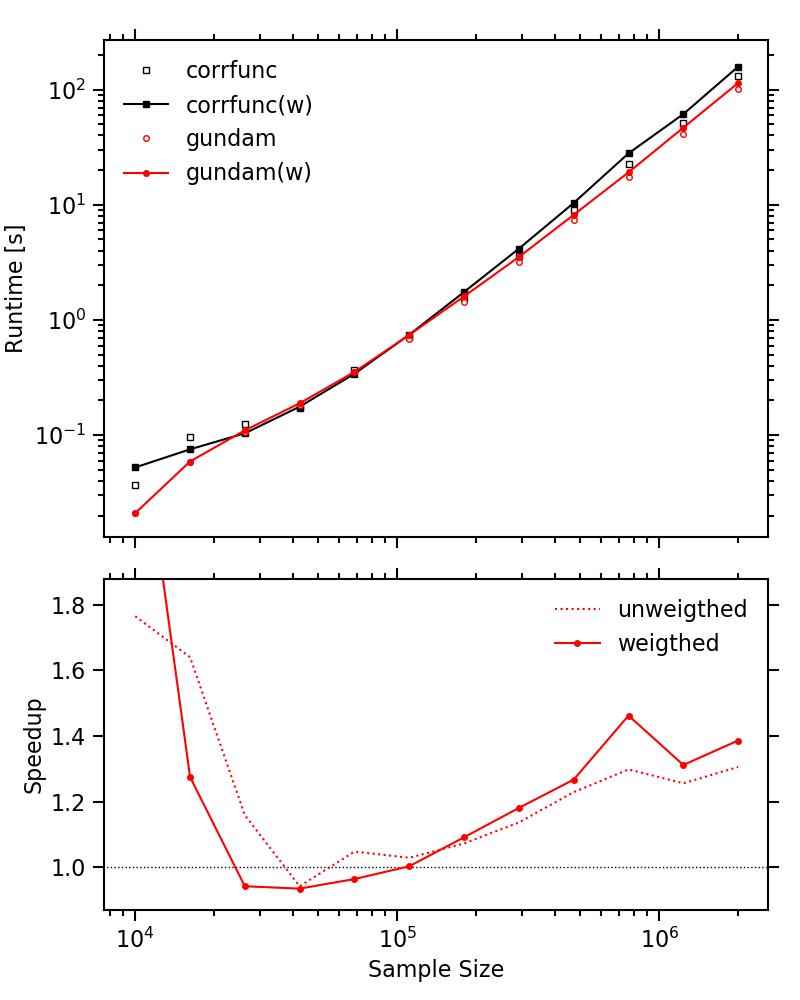Performance¶
The Gundam package is optimized both for speed and usability. Nevertheless, it is among the fastest codes available. Below you will find some benchmarks (single-thread), comparing run time vs size for various samples of 10^4 to 8x10^6 galaxies extracted from a 60x60 deg^2 light cone build from the Millennium Simulation and the Semi-Analytic Galaxy Evolution Model (SAGE).
We show here the effect of sorting the data into convenient cells or pixels before counting pairs, and the effect of choosing a good grid size for samples of increasing density.

Now we compare with one of the fastest publicity available codes (corrfunc)

And now we compare the performance with n threads running in parallel

The equipment employed for testing is based in a four core i7-3770K 3.5GHz CPU (L1 cache: 32KB data + 32KB instruction, L2 cache: 256KB, L3 cache: 8MB shared) with 16GB RAM, running with OpenSuse Linux, GNU Fortran 6.1.1 compiler and Python 3.5.2. Compilation was performed with f2py (numpy 1.11.1) with flags {tt march=native -ftree-vectorize}. We required 14 rp bins from 0.01 to 25 Mpc and 40 radial bins from 0 to 40 Mpc.